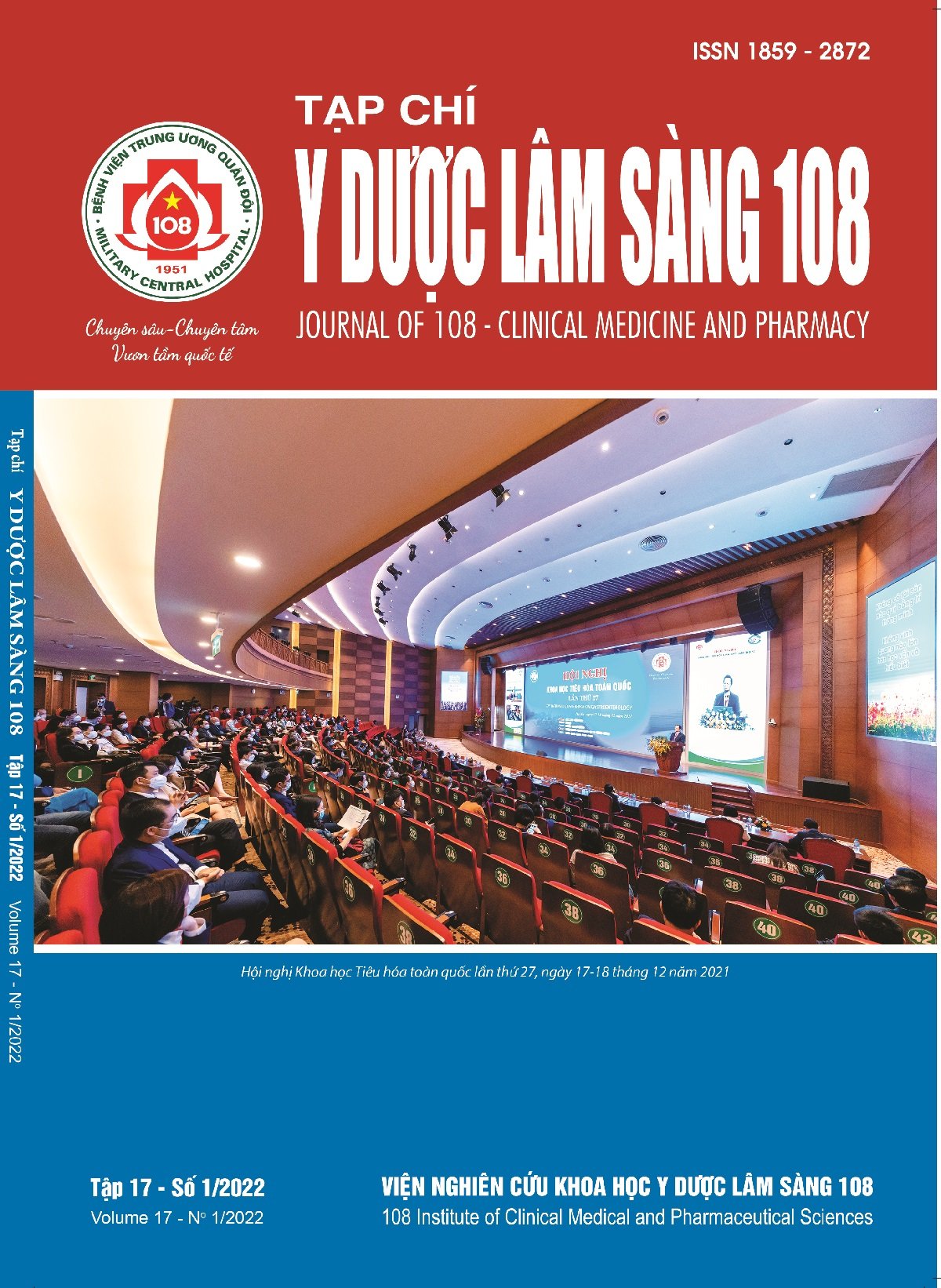Initial evaluation of the effect of improving blood oxygenation of prone position mechanical ventilation in patients with acute respiratory distress syndrome
Main Article Content
Keywords
Abstract
Objective: To initially evaluate the effectiveness of improving blood oxygenation of prone position mechanical ventilation in patients with acute respiratory distress syndrome (ARDS) at the Intensive Care Unit, 108 Military Central Hospital. Subject and method: 18 patients with moderate or severe ARDS (PaO2/FiO2 < 150mmHg with PEEP ≥ 5cmH2O, FiO2 ≥ 60%) were treated at the Intensive Care Unit, 108 Military Central Hospital from February 2020 to September 2021 were indicated prone position mechanical ventilation. Result: The percentage of patients with improved blood oxygen was 83.3%. SpO2, PaO2 improved significantly after prone positioning for 1 hour and during the time of prone positioning. The PaO2/FiO2 ratio increased immediately after the patient was prone positioning for 1 hour and continued to improve in the following hours. When patients returned to the supine position for 4 hours, the PaO2/FiO2 decreased compared to the prone position but was still higher than before the prone position, with p<0.001. Conclusion: The prone position mechanical ventilation had improved blood oxygenation in patients with ARDS.
Article Details
References
2. Kolleft M, Isakow W (2012) Tổn thương phổi cấp và hội chứng suy hô hấp cấp tiến triển. Hồi sức cấp cứu tiếp cận theo các phác đồ (Nguyễn Đạt Anh, Trần Quốc Tuấn dịch), Nhà xuất bản Khoa học kỹ thuật, Hà Nội, tr. 85-98.
3. Gattinoni L, Tognoni G, Pesenti A, et al (2001). Effect of prone positioning on the survival of patients with acute respiratory failure. N Engl J Med 345(8): 568-573.
4. Laurent Papazian et al (2019) Formal guidelines: management of acute respiratory distress syndrome. Annals of Intensive Care 9: 69.
5. World Health Organization (2020) Clinical care for severe acute respiratory infection: Toolkit. COVID-19 adaptation. (WHO 2019-nCoV/ SARI-toolkit/ 2020.1).
6. Ranieri VM, Rubenfeld GD, Thompson BT et al (2012) Acute respiratory distress syndrome: The Berlin Definition. JAMA 307(23): 2526-2533.
7. Guerin C, Gaillard S, Lemasson S et al (2004) Effects of systematic prone positioning in hypoxemic acute respiratory failure: A randomized controlled trial. JAMA 292(19): 2379-2387.
8. Lê Đức Nhân (2012) Nghiên cứu hiệu quả của chiến lược mở phổi và chiến lược ARDS netwwork trong thông khí nhân tạo bệnh nhân suy hô hấp cấp tiến triển. Luận án Tiến sỹ y học, Trường Đại học Y Hà Nội.
9. Pelosi P, Brazzi L, Gattinoni L (2002) Prone position in acute respiratory distress syndrome. Eur Respir J 20 (4): 1017-1028.
10. Pappert D, Rossaint R, Slama K et al (1994) Influence of positioning on ventilation-perfusion relationships in severe adult respiratory distress syndrome. Chest 106 (5): 1511-1516.
 ISSN: 1859 - 2872
ISSN: 1859 - 2872
